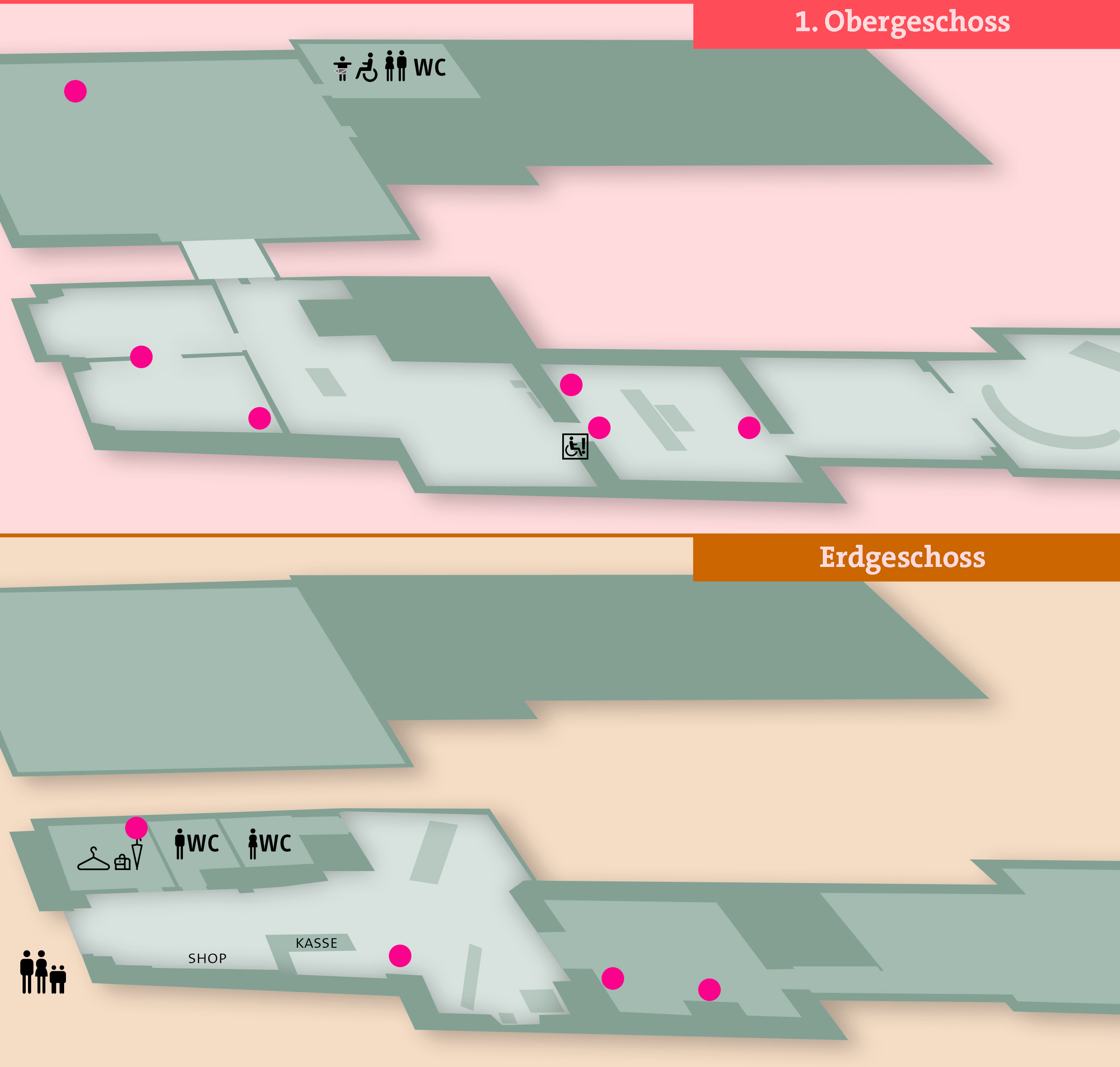
Zeitfenster im Museum Hameln
Windows into the past

Scroll down to read the English text
Die beiden größten Objekte des Museums Hameln sind die Gebäude, in denen die Ausstellungen untergebracht sind.
Das Leisthaus und das Stiftsherrenhaus, beide an prominenter Stelle in der Hamelner Innenstadt errichtet, blicken jeweils auf mehrere hundert Jahre Stadtgeschichte zurück.
Die Sandsteinfassade des Leisthauses wurde Ende des 16. Jahrhunderts errichtet. Viele Bereiche des Hauses stammen jedoch schon aus dem Mittelalter.
Das Stiftsherrenhaus wurde 1558 errichtet und zeugt mit dem reichen Fassadenschmuck von Vermögen seines Erbauers.
2008 bis 2011 wurde das Museum umfassen renoviert. Im Zuge der Umbaumaßnahmen wurde an einigen Stellen in den Häusern historische Bausubstanz freigelegt.
An den im Plan markierten Orten im Museum gestatten diese Zeitfenster einen Blick in die Vergangenheit der beiden Gebäude.

Windows into the past
The two largest objects in the Hameln Museum are the buildings in which the exhibitions are housed.
The Leisthaus and the Stiftsherrenhaus, both erected in a prominent location in Hamelin city center, each look back on several hundred years of city history.
The sandstone facade of the Leisthaus was built at the end of the 16th century. However, many areas of the house date back to the Middle Ages.
The Stiftsherrenhaus (= canons‘ house) was built in 1558 and the rich facade decorations testify to the fortune of its builder.
From 2008 to 2011 the museum was extensively renovated. In the course of the renovation work, historical building fabric was exposed in some places in the houses.
At the locations in the museum marked on the plan, these time windows allow a glimpse into the past of the two buildings.
